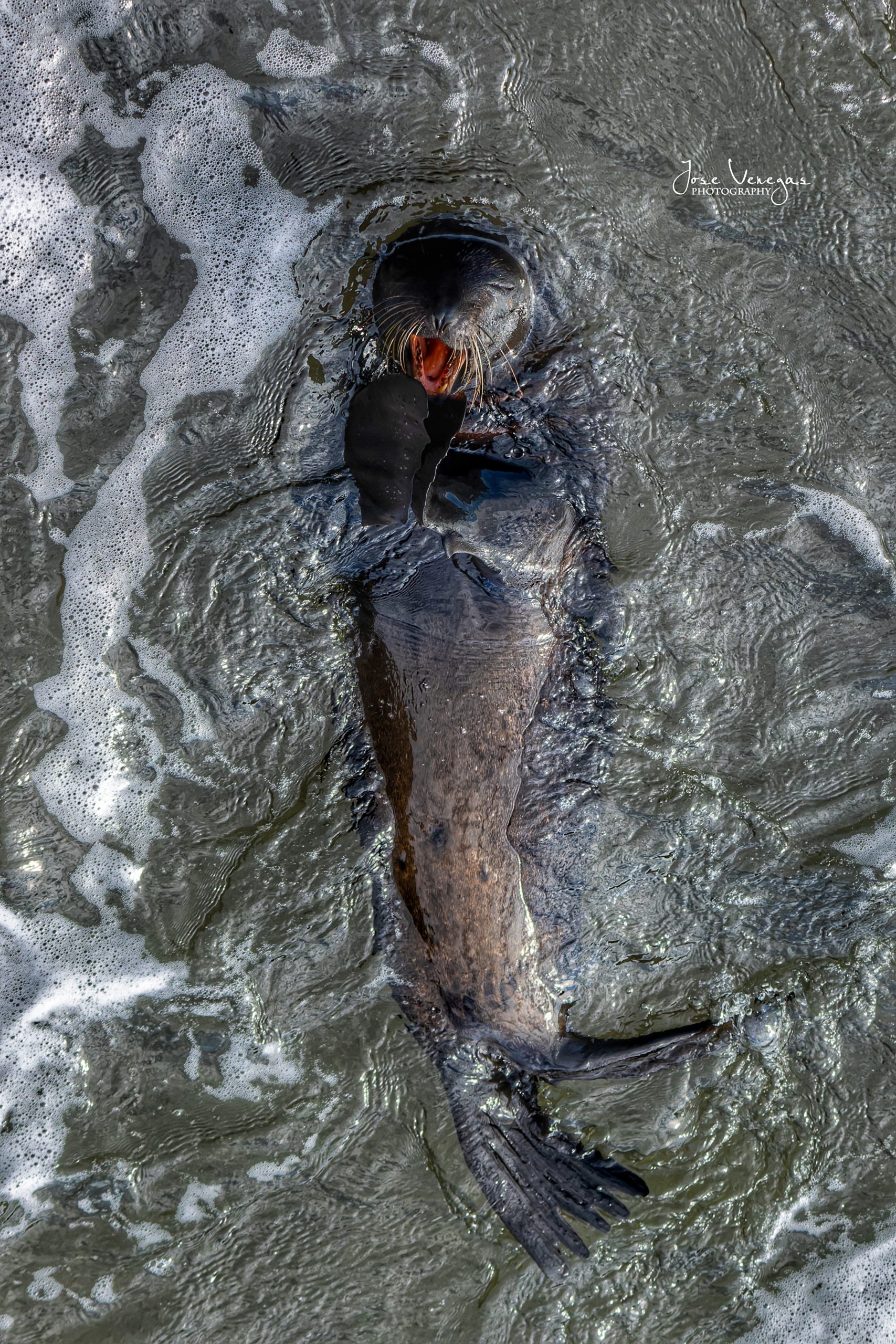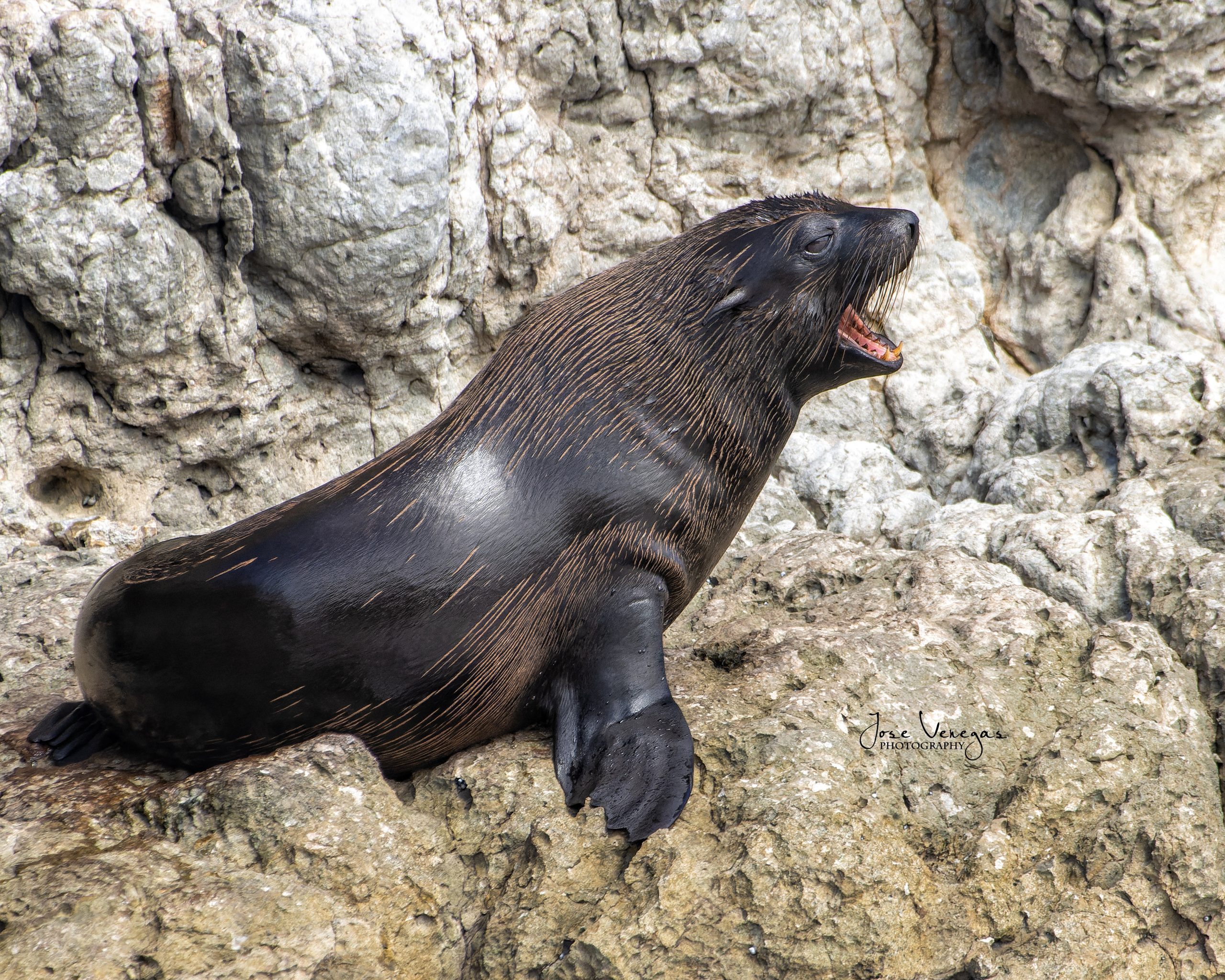
On August 12, Luis Jose Venegas received a message from a friend of his who works in Nosara, who told him that they had seen a sea lion on the coast. The next day, he set out on a trip from Nandayure to Nosara to capture it with his camera lens.
Venegas spends his free time photographing wildlife, but he had never seen or taken photos of a sea lion. “I lived in Nosara for six years [between 2015 and 2021] and in those six years, they saw one individual one, who was there for a very short time. didn’t manage to photograph that one,” he related.
Like him, several people have expressed astonishment due to this sea lion, which has been hanging around among the rocks and the ocean of Peladas Beach, for about two or three months, according to Nosara Fire Department lifeguard Eduardo Orias.
He and the other lifeguards use their binoculars to monitor if it’s still there or not. Orias also affirmed that he hadn’t seen one before in the two years that he has been working on the beach.
This is not the first time that a sea lion has visited the Pacific coast of Costa Rica.
According to marine biologist Jose David Palacios, who is an expert on mammals, these animals arrive driven by ocean currents and because they’re looking to feed and rest. Palacios describes the currents as “water tracks that go in a set direction.”
It’s likely that these animals enter the Humboldt Current, which goes around the Galapagos Islands by Ecuador, and they move in the direction in which the current moves, to the northwest. Until they want to move to the coasts to find food.
According to him, the sea lions that show up on the country’s coasts are juveniles, because they don’t normally know their species’ usual feeding areas well. “So some animals are going to be lost and they’re going to show up along the coast,” he explained.
Added to this is the ocean warming as a result of climate change. “It’s believed that due to the water’s warming, they have to look for food and tend to move around more.”
In fact, according to Palacios, in years in which the El Niño phenomenon has been stronger, there have been more reports of sea lions in Costa Rica.

The sea lion in Nosara has spent two to three months between the rocks and the water of Peladas Beach in Nosara. From the post, community lifeguards monitor whether the animal is still in the sector. Photo: Luis Jose Venegas
A More and More Common Visit
According to reports from the Pacific National Marine Park, in the south of the country, sightings of these animals have been reported more frequently along the country’s coasts since 2010.
In fact, since that year, Palacios and veterinarian Gabriela Hernandez have been monitoring appearances of these animals. Between 2010 and 2020, 17 sea lions were counted from Cuajiniquil in La Cruz of Guanacaste to Pavones in Puntarenas. They hope to publish their study next year.
According to the expert, two species have been seen in the country: the Galapagos fur seal and the Galapagos sea lion.
Rocky beaches are the preferred ones to rest, and feeding normally takes place at night,” he commented.
For some years now, between four and five individuals show up each year, although it’s impossible to know with certainty if a single one visits several places, added Palacios.
“And it’s no longer rare because it happens every year,” he explained, adding that with El Niño phenomena becoming more pronounced, it’s likely that they will show up more frequently, not only in Costa Rica but also in Panama, Colombia and other coastal areas.
The marine biologist thinks it would be innovative to follow the movement patterns of these animals, to understand what they’re doing in Costa Rica and how they use the habitat in coastal areas when they’re in the country, as well as to determine if an individual visits several of the country’s coasts. For this, they would have to be marked or tagged.
“It would also be very interesting to take samples from them to carry out genetic studies,” the expert said. “The hypothesis is that they come from Galapagos because it’s the closest population to Costa Rica, but it could also be that at some point, an individual comes from the population that is farther north [in California].”
The deputy director of the Tempisque Conservation Area (ACT for the Spanish acronym), Maricio Mendez, specified that the institution is not doing official monitoring of the appearance of these animals.
From his point of view, sporadic reports aren’t enough to initiate a formal investigation. “The best thing that can be done with wildlife is to not disturb it. If there is one alive and it’s going to die, it’s better to let it die. If someone tries to capture it, we’re going to tell them not to capture it. It’s better not to do it,” he said.
What should I do if I see a sea lion?
First, follow the instructions below to protect your life and that of the animal:
- Stay calm
- Don’t get closer than 10 meters (about 33 feet)
- Don’t make noise
- If the animal is moving on the beach, don’t interrupt its course
You can also help by collecting information and sharing it with Jose David Palacios at 8489-2173 or with Gabriela Hernandez at 8893-7609. Together, they continue to analyze the visits of these animals.
What to collect?
- Date
- Hour
- Place (beach or site)
- Tide
- Photographs








Comments